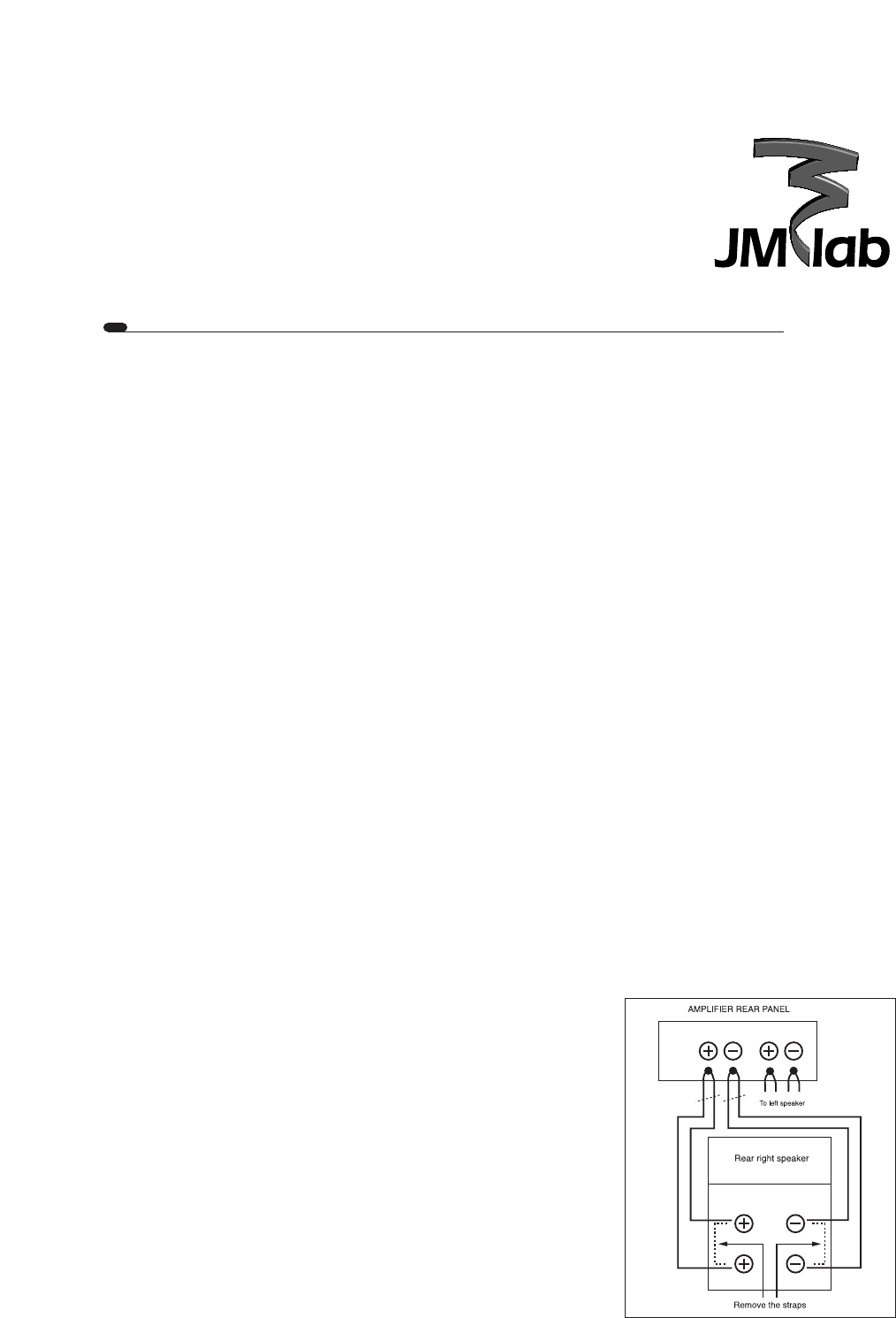
Hi-fi
User manual
5
We have defined the main arrangement rules for your listening room. Naturally, the reality of a home environment calls for compromise
solutions. However, we could not end these installation tips without drawing your attention to the accessories that sould be considered
which will make a significant contribution towards increasing your listening pleasure. These are the stands, the cones, the connection
cable between the speakers, the amplifier and the bi-wiring.
• The stands should be selected according to the criteria described above for ideal height positioning of your JMlab speakers.
The stiffness of the construction plays a part in the reproduction quality. JMlab offers a wide range of stands (from 20 to 60cm)
especially designed for this type of application.
• Cones and points improve clarity in the bass and midrange regions by decoupling the system from the floor and reducing floorborne
resonances. Points can be used under floorstanding or stand-mounted speakers. Most of our systems include these accessories, we strongly
encourage their use.
• The coupling cables between your speakers and the amplifier must not be neglected. The complexity of the music signals, combined
with their very wide frequency range, is such that the problems linked to the electric transmission of such a signal within the cable are
extremely tricky. The rule of an audio cable has nothing to do with that of a plain electric cable that drives a single frequency such as
50 or 60Hz house wiring. The cable in your installation is crucial to the sound resolution, especially for micro information,
while generating an ample, deep and detailed sound image.
Use cables made from multistrand oxygen free copper, surface areas are 2.5mm
2
or 4mm
2
. Cable is not provided because lengths varie
between 2m and 12m according each installation. We suggets consulting your dealer for the best setup. Make sure to keep the connection
between the binding posts and speaker cables clean: use high purity alcohol (90deg+) to clean the contact surfaces and remove any grease
or contamination which could reduce the clarity of the sound.
• Bi-wiring, is a coupling mode which allows provision for enhanced reproduction transparence. Bi-wiring is accomplished when the low
bass and the midrange/treble frequencies utilize two separate cables from the amplifier output. This reduces or eliminates any problem
caused by the bass drivers feeding any signal back to the amplifier. This signal intermodulates and spoils the sound quality of the
midrange and treble. Bi-Wiring eliminates this deleterious effect. On selected JMlab models you will find four gold plated binding posts:
the two positive terminals (+) and two negative terminals (-) are connected by pairs of gold plated jumpers. When using these systems in
bi-wired mode, remove the jumpers to separate the electrical connections between the 2 positive and two negative binding posts.
Instructions for bi-wiring:
• First of all, it is imperative to remove the straps or bars which link up the two
positive and the two negative plugs at the rear of the loudspeaker.
• Make sure that you have a second set of cables ready. Taking one set of cables, link
up one of the two pairs of positive and negative plugs (if you have the choice, use
the thinner cable for the upper, “treble” plugs.
• Similarly, the second set of cables will be used for linking up the remaining plugs.
To check the polarity, please note that each of the two conductors is identified by
a coloured mark or ring. Then link up the other end of each of the two conductors
to the amplifier by matching the positive wires to the red (positive) plug on the
amp, and the two negative wires to the black (negative) plug.
• If the amp, allows for use of two groups of loudspeakers (groups A and B),
connect up one of the dual conductor cables as group A (or B). The second set of
cables will be connected to the remaining plugs (A or B). Turn on the “A+B”
switch on the front of the amp.
The bi-wiring principle, the bass and the midrange/treble are supplied
separately from the amplifier utilizing two pairs of cables.
3. The “accessories” you mustn’t neglect
right output
left output








